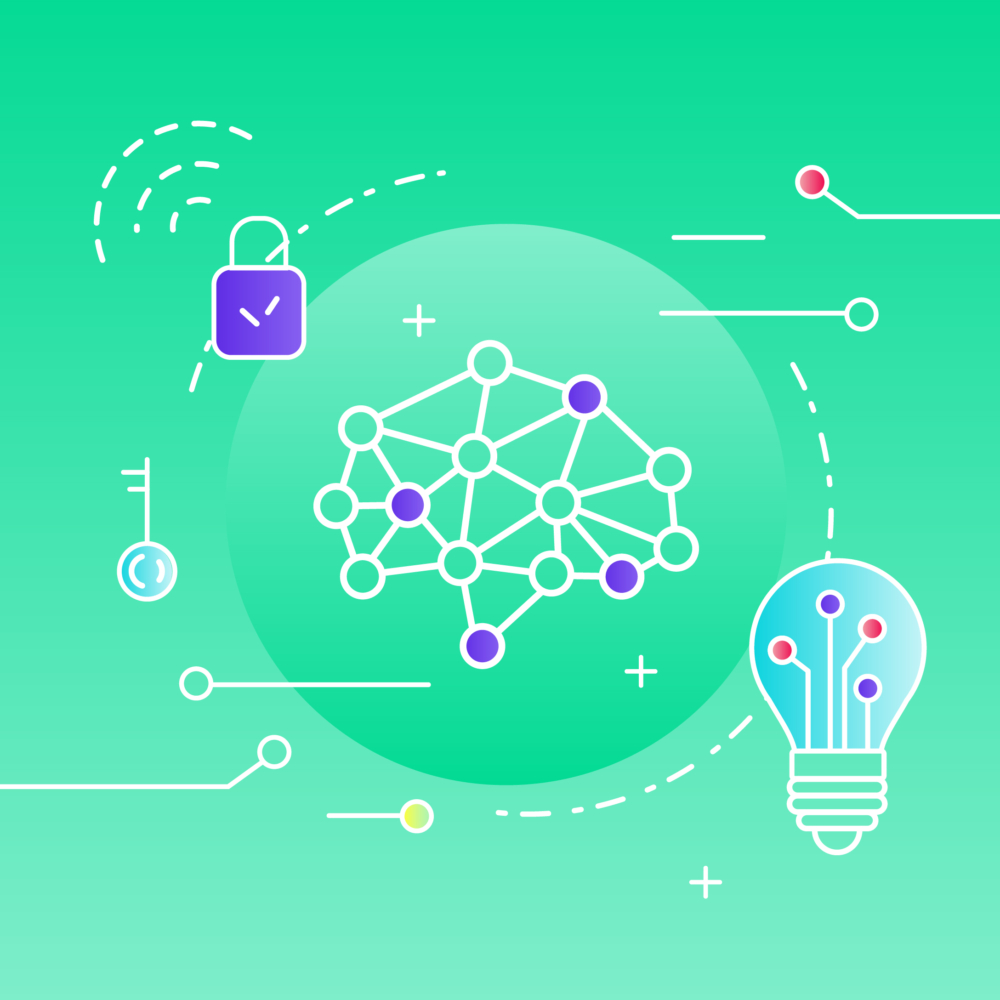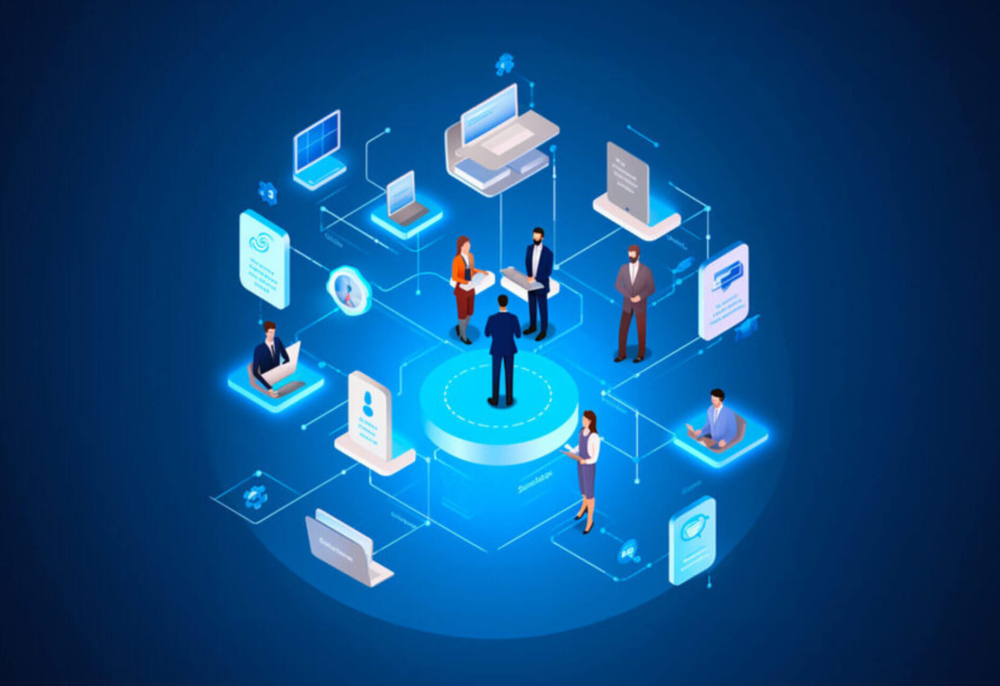
IoT in business: where to start?
The IoT revolution
Not so long ago, a small revolution took place in our everyday lives. Indeed, without truly changing our habits, various devices such as voice assistants, connected appliances, and Bluetooth devices have made their way into our daily routine. However, only a few decades ago, their existence was the stuff science-fiction novels and movies were made of. This revolution also made its way into the industrial field, by automating production lines and making them more efficient.
These “connected objects” belong to what has become known as The Internet of Things. This term, designated by the acronym IoT, is defined as: « …the set of objects connected to the Internet capable of communicating with humans, but also between them, thanks to electronic intervention systems »[DB1].
Globally, the IoT is growing at a geometric rate and it is estimated that the world will have more than 30 billion connected objects in 2020 [LF2] . While many IoT applications have become an integral part of many people’s lives, the IoT’s potential in the business and industrial world is often overlooked. That being said, the IoT is a powerful lever for automation and data generation that is sure to pique the interest of many entrepreneurs.
In this article, we will examine the potential of the IoT in the business and industrial world. You can also take a look at our technical article which provides a case study on the use of an IoT solution.
Companies in the IoT era
At the forefront of the Industry 4.0, subset of the fourth industrial revolution, the Internet of Things allows companies to digitally interconnect all the links of the production chain and make them communicate with each other, thereby creating a series of “connected systems”.
These systems provide crucial data that can be used in several ways, including: establishing predictive maintenance of the devices by collecting real-time information on their condition; using sensors to measure the raw material consumption in a supply chain [DB3] or to generate real time reports. The IoT has also paved the way for the creation of countless, connected products and services that simplify our daily lives. Examples include indoor geolocation and object tracking, connected thermostats, smart vehicles or dockless bike-sharing systems [LF4]. Simply put, when it comes to IoT, the possibilities are endless!
The main strength of connected systems lies in the veritable gold mine of data they generate. This data can translate into growth opportunities, production improvements, a better understanding of user behavior, a diversification of the services offered by the company and a better customer experience. [DB5]
The benefits of IoT no longer need to be proven. In fact, according to Forbes Magazine, this reality is a huge profitability driver: the proof being that more than 70% of business leaders surveyed by Forbes Insights believe that IoT has helped them increase their bottom line.
For businesses, IoT is more than just a series of connectivity tools that make their lives easier. Rather, it is a veritable business transformation that affects their processes, production and business strategy.
The importance of a strategic approach
The promises of the Internet of things are enough to make more than one entrepreneur salivate. However, without a solid development strategy, finding and extracting the right information from the huge amount of data generated by connected systems can make it seem like looking for a needle in a haystack.
To ensure that your IoT strategy unfolds smoothly, Logient follows a strategic approach that is comprised of three phases: analysing your business requirements, designing a proof of concept, developing and deploying your solution.
-
The analysis of the business requirements
You believe that the IoT could be a winning formula? To ensure that it is, we will conduct an in-depth analysis of your business reality in order to, first, clearly identify your requirements, and then define their value. This analysis will inform you about the gains and benefits provided by IoT, including the short- and long-term return on your invested capital in relation to the required costs. This sort of information is crucial when it comes to starting a well-thought-out IT project. For example, this analysis can provide you with:
- A competitive analysis and market positioning
- A study of the feasibility and costs
- A report on the optimisation of your business processes
For example, a recent study on the optimisation of digital processes for a client in the food processing industry helped identify the relevant data to save, extract and analyse in order to improve the company’s overall productivity. A software and system development plan, including what added-value AI (artificial intelligence) could bring to the project, was also provided.
-
The proof of concept
The proof of concept is a demonstration of what the solution has to offer. After having established your requirements and learning about the performance improvements offered to you, you’ll be able to get a taste of what your project will be before it is deployed on a larger scale. The objective of the proof of concept is to limit your investment while you confirm the commercial value of the project in order to optimize your investment. It can also determine the relevance of continuing the project. This step generates a first set of relevant data to specify the infrastructure, the type of connectivity and the hardware required for the implementation. We can also explore the possible types of services that the IoT solution will render. You will therefore be able to deploy the solution for a limited number of users in order to collect information on the functionalities to add, adjust or eliminate. The proof of concept could become an MVP or simply remain a smaller prototype.
-
The development of the solution

Did you know that a Cisco survey showed that 60% of companies that undertook IoT projects admitted that they largely underestimated their difficulty? Logient understands the complexities of the ecosystems that drive IoT solutions and will be able to offer you the technologies and the help of seasoned professionals to carry out your project – whether it’s for consulting services, development, maintenance or hosting. Our team is comprised of: embedded software developers, Cloud infrastructure specialists, mobile and Web solutions developers, AI analysts, integrators, microservice developers, etc. Do you quickly have access to all these individuals? Are they all under one roof?
Logient will accompany you by planning the steps to follow, deploying a team and applying the suitable and adapted Structured Agility methodologies to bring any of your IT projects to fruition. This approach is put forward to ensure compliance with the business requirements, respect the technical and budgetary constraints and take into consideration the business reality of the company.
Find the partner you need
To take advantage of the full potential of the Internet of Things, you will need the help of an experienced and seasoned partner. Whether for a portion of the project or for its entirety simply depends on your specific requirements. That being said, make sure you select a partner who has the ability and expertise to take charge of your entire project and support you along the way during this transformation.
Choose a supplier that brings together all the expertise and know-how required to complete your project – strategists, architects, developers, AI & BI experts, and so forth. When it comes to an IoT project, it’s best to not leave any stone unturned and explore all possibilities.
Logient, official member of AIoT Canada
1 – http://granddictionnaire.com/ficheOqlf.aspx?Id_Fiche=26529845
2 – https://spectrum.ieee.org/tech-talk/telecom/internet/popular-internet-of-things-forecast-of-50-billion-devices-by-2020-is-outdated
3 – Burberry stops burning unsold goods and using real fur. (2018, September 6). Retrieved from https://www.bbc.com/news/business-45430683.
4 – https://www.economie.gouv.qc.ca/bibliotheques/outils/gestion-dune-entreprise/industrie-40/linternet-des-objets-accessible-aux-pme-manufacturieres/
5 – https://www.forbes.com/sites/insights-inteliot/2018/08/24/5-ways



















